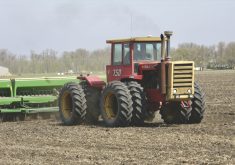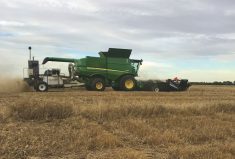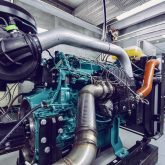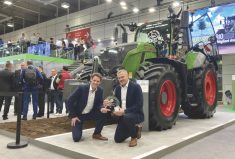At this year’s U.S. Farm Progress Show in Boone, Iowa, AGCO’s senior VP and general manager for the Americas Bob Crain was clearly enthusiastic about the new tractors he was there to introduce, particularly the 1000 Series very-high horsepower, rigid-frame models that were originally introduced under the Fendt brand last year.
Now, they are also available as Challengers.
“This (1000 Series) gets a lot of people excited,” Crain said. “And the reaction of our dealers — and just as important, our customers — has been outstanding. Some have been telling me we potentially have a tiger by the tail here, so we have to figure out how to tame this thing and work with it. It’s a new segment of the market we’re dealing with, almost taking the place of a four-wheel drive with power to the ground and the flexibility and manoeuvrability of a row-crop tractor.”

With AGCO’s Challenger brand dealership outlets numbering more than 400 across North America, getting these tractors into a coat of yellow paint means they’re bound to see much broader distribution and, therefore, more interest from U.S. and Canadian farmers.
By comparison, the company’s Fendt-focused dealerships amount to a relative handful. So this move was likely critical from a marketing standpoint, especially given the investment AGCO has made developing these tractors.
“The tractor was probably four or five years in development,” Crain explains. “I’m sure the idea for something this large, especially with the two transmissions on it, has been there for many, many years. But the bulk of the work has been done in the last four or five years.”
“In the current industry and the current atmosphere, most of us (ag equipment brands) are very focused on short-term stuff,” he continued. “That said, I think the true test of a company that’s going to be here, that has staying power, is the investments it’s making for the future.”

Crain tied the innovation directly to AGCO corporate strategy: “I’m lucky enough to work for a company with a CEO and a board that has not allowed us to take our foot off the accelerator.”
The 1000 Series Challengers remain essentially the same tractors as the Fendt versions, although their components get Challenger nomenclature. Under the hood, they are one of the few machines in the AGCO stable to use something other than AGCOPower diesels. Instead, they get a MAN 12.4 litre, six cylinder that puts out 1,770 pound-feet of torque at a leisurely 1,100 r.p.m.
“You can go from 30,000 pounds to 50,000 pounds (of ballasted weight) with this machine,” said Josh Keeney, tactical marketing manager. “We incorporated a low-speed high-torque engine, and all the components in that tractor are designed to work within that maximum 1,100 r.p.m. range. At 1,100 r.p.m. you never increase your engine speed because you need hydraulics.”
To turn all that muscle into effective traction, the 1000 Series tractors use “torque vectoring,” which means basically that two transmission outputs deliver differing drive torque to each axle independently.

“Unlike today’s conventional four-wheel-drive tractors that use a fixed torque ratio between the front and rear axle, AccuDrive employs variable four-wheel drive that distributes the torque independently over two transmission outputs on each axle,” said Keeney. “An intelligently controlled, four-wheel clutch manages the torque, so it can be shifted between the axles according to need. We call it Challenger Torque Vectoring, and this is how we get the power and traction of an articulated tractor into a fixed-frame platform.”
The four models in the 1000 Series offer 396 to 517 horsepower. Optional dual hydraulic pumps can push oil flow up to 430 litres per minute through six rear remotes. When it comes to digital technology, the 10.4-inch AccuTerminal has four GB of memory capacity and 15 implement memory spaces, and it can handle two remote camera inputs.
Read Also
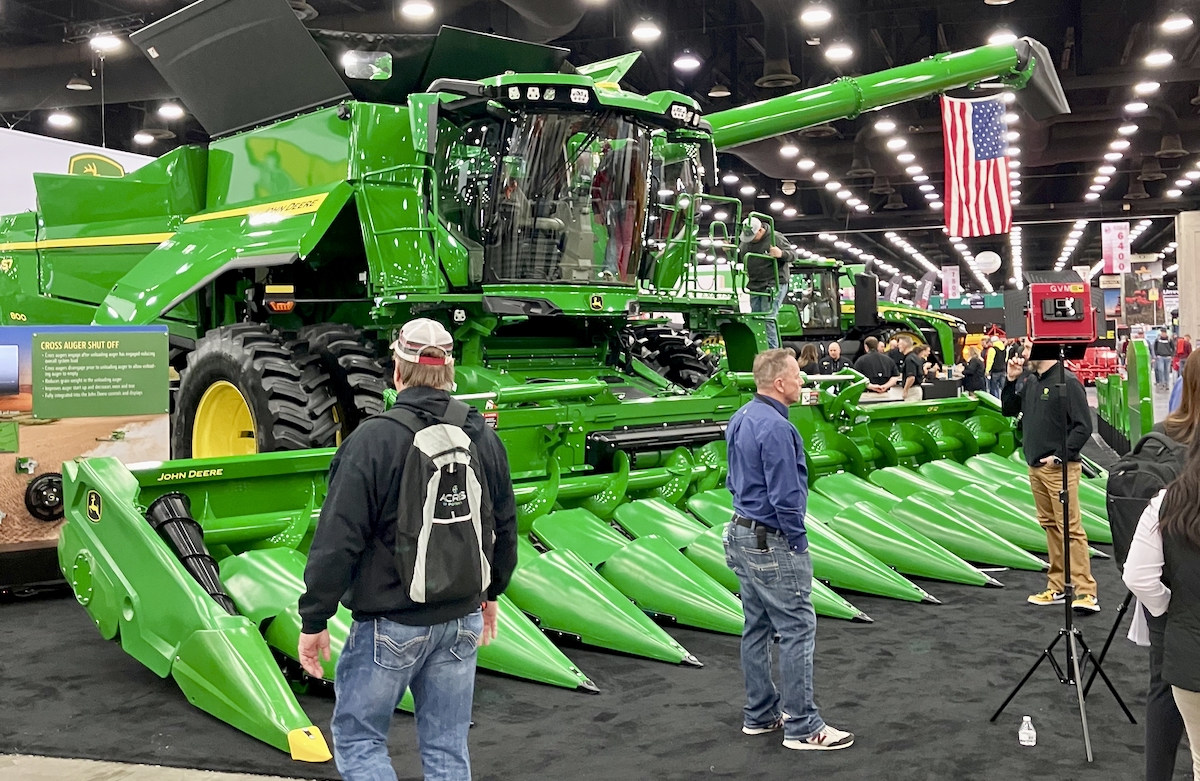
The pros and cons of new technologies
New farm technology hitting the marketplace can be awfully enticing, and it’s not been unheard of in years gone by…
“It plays in a different segment that we’re creating,” said Crain. “It’s a 500-plus-horsepower, rubber-tired tractor. We think it can take the place of two different tractors, even a smaller articulated tractor, truly putting power to the ground with all the versatility of a rubber tire tractor.”




